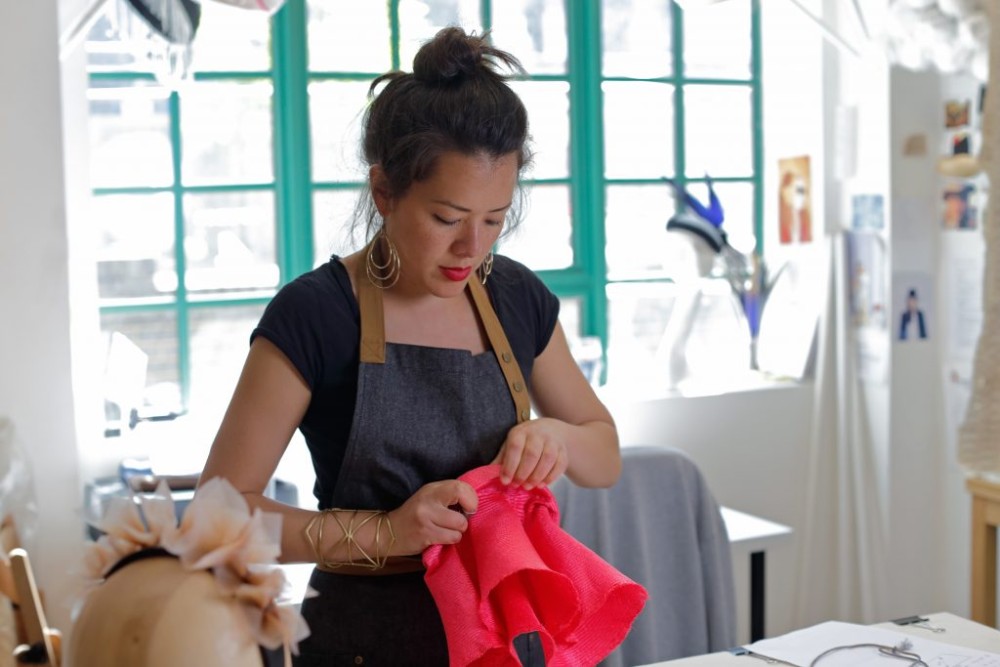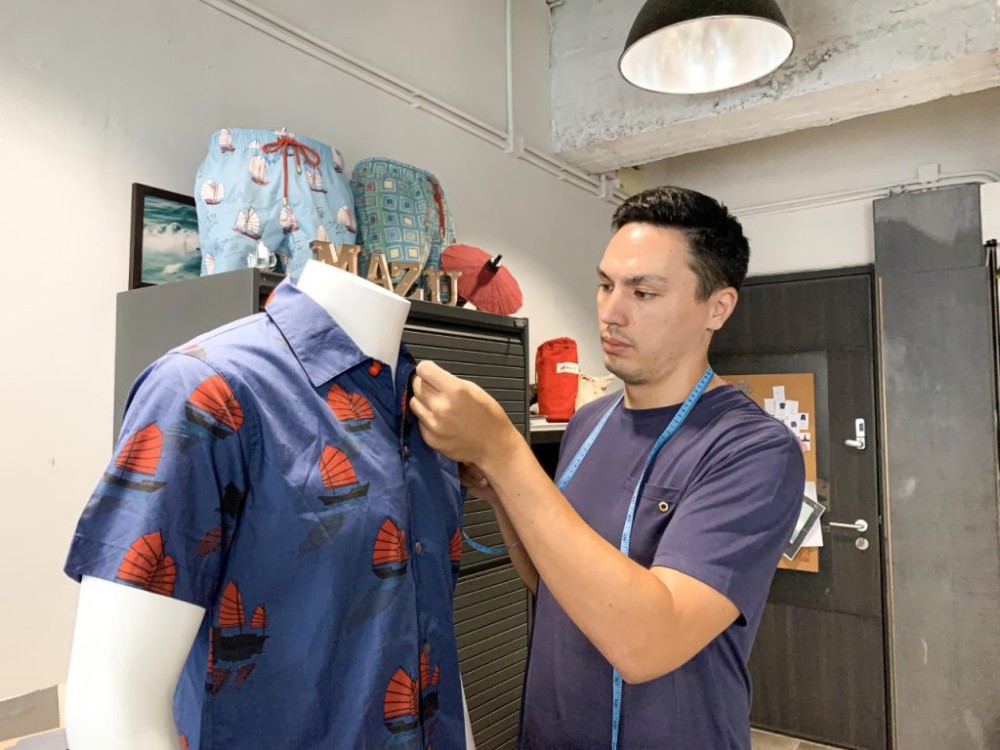The dark side of Hong Kong's fashion industry
Sep 20, 2019

We rang up, emailed, Whatsapped and DMed a handful of prominent local designers to discuss the “dark side of fashion” – on the record. While we anticipated some answers (pollution, wastage, harassment of all manner, the scourge of influencers), others gave us invaluable insights from experience.
Seated across from me in the plush showroom of his eponymous label, Barney Cheng is Hong Kong’s most easily recognised designer and couturier; a feature celebrating his 25-plus years in the industry was in the works. While our talk meandered over the firsts (catwalk, Oscar red carpet, supermodel and celebrity), at some point in the conversation, his otherwise affable and cheery voice turned a bit more muted as he revealed facets about an altogether unpleasant experience.
“We had done a shoot where I had provided the stars, the models, the jewellery, the clothes, paid for the location, transport – basically been the ATM for the entire project,” he says, rewinding the clock. “We were raising money for a very worthy charity when, after all the work was done, suddenly the [nameless and shameless] photographer wanted all the credit and money for it.”
Flabbergasted about the about-face weeks into the project and days before the deadline, the man-of-faith recalls, “I tried to explain we were raising money – this was a non-profit exercise – but he just flat-out refused to do anything and he held the images hostage. Everything was done over the phone or conversation in-person, so I had nothing written down. I learned a lesson quickly. Instead of being angry now, I think, wow, God put me there in that situation for me to learn a life lesson.”

Decades after it happened, the chapter still clouds Cheng’s history; he wonders about trusting people too quickly and, well, humanity as a whole. Everyone had volunteered for a cause and in the end, it felt like a manifestation of the adage “no good deed goes unpunished”.
When it comes to the fashion industry, it’s not all glitter, red-carpet, billboards, billion-dollar sales and celebrity dressing. There’s an ominous, foreboding side to it that forbids the weak and the meek. As Michael Kors famously said on Project Runway to the aspiring designers, “Fashion is not for sissies.”
As the owner and designer of the Hong Kong-based brand Mazu, Adam Raby has a few notes for us on the topic. We’ve been charting the course of Raby’s business for a while, and he’s learned a lot from trial and error since launching his label, which has expanded from swimwear to menswear. When asked about the challenges in the business, he says, “Nothing is too dark for me,” after which he laughs. Later, he adds, “But when you have your own brand, people – especially friends – are always looking for a discount or free shit all the time. It’s like, I’ve got to make money…”
“The stark reality of being a creative and a business owner was a bit of a blow. I really did think it was going to be days of sketching in museums and collecting fabric swatches from cloth shops. Damn you, Project Runway”
Awon Golding
As Hong Kong businesses of all shapes and sizes have taken a massive hit over the past few months of protests, it isn’t just declining sales that the luxury, fashion, jewellery and beauty industries have seen – it’s “a complete stop”. In the industry, you can’t choose sides in a political debate, as public opinion and public consumption are variable factors. A major brand representative wouldn’t go on record, but the luxury jewellery retailer said they had “zero sales” over the past three months, and were on the verge of closing two of their major stores and laying off dozens of hardworking people due to overheads and rent.
When it comes to projections, Raby says, “Sales is always a dark side to me, the great unknown – like trying to get as much sales as possible and hitting reasonable targets. Most of the time, you don’t make your targets. It’s not as easy as people think.”

That’s just it – most people don’t think, especially when it comes to the bigger picture. When it comes to “influencers” or that acronym “KOL” (key opinion leader, for the uninformed), the young and entitled find it necessary to beg, borrow and… well, mostly steal. Raby is so aware of this scourge that he already “anticipates” unreturned items. Wouldn’t the word be theft? “When they return an outfit or item on time, it’s a pleasant surprise,” he says.
Hong Kong-based Balinese designer Ika Butoni sent a note and image via Facebook stating that a well-known KOL in Hong Kong borrowed an outfit from her for a red-carpet event and returned it unwashed, with ripped seams and make-up stains. Ruined beyond repair, compensation to fix the dress was not up for discussion, let alone payment for the ensemble. To add insult to injury, Butoni says, “And then she blocked me on social media!”
“The biggest dark side people might not know is that in Asia, they have a huge ‘consignment’ culture,” explains Raby. “From a start-up business point of view, you’re taking the risk. People on this side of the world don’t really do wholesale, especially when you’re from Asia. They want zero risk and all the gain, which is super-annoying because you’re trying to grow and mange cash flow. Of course, you want buyers to buy into your brand, but in the US and Europe, they’ll do wholesale, which makes it so much easier for a brand like myself to be more successful. I truly think that if I had started this business in Europe or America, it would be so much bigger than it is now.”
It’s perhaps a foresight that milliner Awon Golding had as she left Hong Kong to launch her brand in London years ago. Since her roots are still in the city, we asked her about designing hats for ladies who lunch and go to the Ascot races for a sight of the Queen and her royal entourage. “The dark side of fashion? Hmm. I haven’t experienced anything seriously sinister,” she writes via email. “I think for me it was more about when the veneer of glamour peeled away to reveal the sheer amounts of admin it takes to run a successful fashion business. The stark reality of being a creative and a business owner was a bit of a blow. I really did think it was going to be days of sketching in museums and collecting fabric swatches from cloth shops. Damn you, Project Runway! I spend at least, if not more than, 50 per cent of my time emailing and filing bits of paper – hardly the glamorous life of a designer.”
The founder of Pi’A, Priscilla I’Anson, focuses on similar Excel sheets, accounts and the bricks-and-mortar headaches of the biz. “On the corporate side, landlords generally aren’t willing to take a risk on a smaller brand,” she says. “I’ve personally tried gathering a collective of Hong Kong brands to come together and share the rent on a quality high-traffic rental location, but landlords think it’s too risky a business plan. On the customer side, there’s definitely this strange stigma in the local community that somehow ‘designed in Hong Kong’ or ‘made in Hong Kong’ is inferior to overseas brands.”
Echoing that hypothesis, Douglas Young, the founder of G.O.D. (Goods of Desire), faced this early on – and simply stopped designing furniture and expanding his clothing line in his stores dotted around Asia. If sartorial prejudice or latent racism is a thing, he’s faced it. “If you have a thing that’s made in Hong Kong and it costs X dollars, people don’t want to pay that much – but make the same damn thing in France and suddenly it’s cheap, right? Why the double-standards when it comes to the Hong Kong consumer?” he asks, vexed. “I think they’re still living in this post-colonial age. I mean, I lived through the colonial era and I know what it was like – not that I was badly treated by British people as such – but under the colonial system, being foreign or foreigners are seen as being our masters, being superior. And I think we still have that mindset.”
Volleying back to I’Anson, she expands further on points. “I’d say the dark side of fashion is pretty clear: it’s the damage it can do to the environment if inventory and production are not managed appropriately. Fashion is the second most-polluting industry after oil. Inventory overstock is a huge problem; luxury brands have been criticised in recent years for their deliberate destruction of unsold goods in order to prevent dilution of their brand value. The unrelenting fashion cycle and this idea that the customer always wants something new is also incredibly flawed. Designers should release collections and products when they feel inspired to do so, not because they’re expected to adhere to some rather arbitrary seasonal schedule set by greedy fashion bigwigs. We need to re-evaluate the cyclical nature of fashion and the modern consumerist mentality of purchasing something new to wear for every occasion. We should instead be prioritising the creation of well-made, timeless pieces that customers can wear again and again for years to come.”
All the designers we spoke to in some form or another mentioned that people “lip-sync” their support, but don’t shell out the dollars and cents for new, young talent. If a European mega-corporate brand was shelling out anything, though, they’d lap it up in a heartbeat. “The lack of support that Hong Kong creatives have from local customers and enterprise is an ugly reality,” says I’Anson.
“We need to re-evaluate the cyclical nature of fashion and the modern consumerist mentality of purchasing something new
Priscilla I’anson
to wear for every occasion”
And let’s face it, money is key. At the end of the day, it’s a business and profit margins are often on the distant horizon.
Another devious and dark part of the fashion industry – one that we aren’t addressing quite yet – is of course the rampant copying and knock-offs of original ideas that new designers can’t battle against. But fear not, as you’ll find that daily on Diet Prada…
This feature originally appeared on #legend’s Sep/Oct 2019 print issue




























